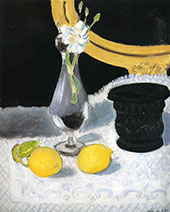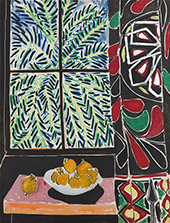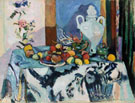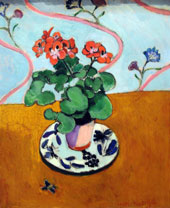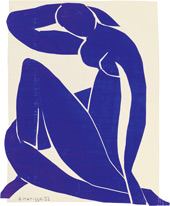Henri Matisse Oil Painting Reproductions
Henri Matisse replica paintings on Canvas for sale
Henri Matisse Painting: An Artistic Biography
Henri Matisse was a pioneering French artist born on December 31st, 1869, and is responsible for redefining attitudes toward fine art. He worked across many genres, including Fauvism, Modernism, and Post-Impressionism.
These intensely colorful creations garnered significant critical acclaim during his lifetime. Ever since Matisse's reputation has only grown.
So, who was this legendary painter? Today, we explore Henri Matisse artwork and his fascinating life.
Where is Henri Matisse born?
Matisse hails from Le Cateau-Cambrésis, a town in northern France. The son of a prosperous grain merchant, he grew up in nearby Bohain-en-Vermandois.
In 1887, the young man traveled to Paris. But, studying Law, he only started painting in 1889, at the age of twenty.
Why did Henri Matisse start painting?
Matisse started painting after receiving a collection of art supplies from his mother. She gifted them while he recovered from an acute appendicitis attack. Describing painting as a “kind of paradise,” Matisse never looked back.
Determined to become a painter, he enrolled at the Académie Julian in 1891. Studying under William-Adolphe Bouguereau, Matisse’s early works were primarily conservative and traditional. He further studied at the Ecole Nationale des Beaux-Arts under Gustave Moreau.
Matisse particularly admired French master painters such as Nicolas Poussin and Antoine Watteau. He also appreciated Japanese prints and modern Impressionists such as Édouard Manet.
What are five facts about Henri Matisse?
- Matisse’s early style transformed after seeing the work of Vincent van Gogh. During an 1896 trip to Belle Île, the Australian painter John Russell gave him a Van Gogh drawing. Matisse immediately abandoned his dark, naturalistic coloring and adopted bright, vivid tones.
- Matisse fathered a child out of wedlock with his model, Caroline Joblau. Born in 1894, this was Marguerite. Later marrying Amélie Noellie Parayre (who also served as a model), they had two further sons together. Their sons were Jean (born 1899) and Pierre (born 1900).
- Matisse immersed himself in the work of other painters. He even went into debt buying paintings by artists he admired. Indeed, Matisse’s collection included sculptures by Rodin, Van Gogh drawings, Cézanne's Three Bathers, and Gauguin paintings.
- From 1898 onwards, Matisse experimented with “divisionism.” A technique pioneered by the painter Paul Signac, it formed an essential part of early Pointillist and Impressionist art. This process involves the separation of color into individual dots and features in Matisse artworks such as Figure with Parasol and Luxe, Calme et Volupté.
- Matisse’s first solo exhibition took place in 1904. It wasn’t a great success, though, with few significant sales. After this point, Matisse’s love of bright colors grew and grew. From this year onwards, he adopted an increasingly Fauvist approach.
Why is Henri Matisse famous?
Henri Matisse is famous for two things. These are his colorful Fauvist-inspired paintings, such as Matisse Dancers and Woman with a Hat. In addition, he’s also known for his collage works, exemplified by Matisse Blue Nude and the enigmatic Nightmare of the White Elephant.
Matisse showed with the Fauves in 1905. At the Salon d’Automne, he displayed Open Window and Woman with the Hat. The exhibition received harsh criticism. Indeed, one critic declared that a “pot of paint” was “flung in the face” of the public.
Nonetheless, Leo and Gertrude Stein (American art collectors) bought Matisse’s Woman with a Hat for a considerable sum. Moreover, the sale boosted Matisse’s morale after sustained critical attacks.
After a visit to Algeria in 1906 and Morocco in 1912, Matisse increasingly adopted “primitivist” approaches. He incorporated black tones in addition to bands of intense flat colors. Best seen in Henri Matisse The Red Studio (painted 1911), it's a work of bright, bold beauty.
Speaking of this time, he also wrote about how the Moroccan people daydreamt while starting into goldfish bowls. This experience inspired the tranquil Henri Matisse Goldfish (1912).
Another important event happened around this time. Matisse met Pablo Picasso. The pair remained friends and rivals for the rest of their careers. Whereas Matisse often painted from nature, Picasso often worked from imagination.
Through connections with Gertrude Stein, the America Cone sisters (Etta and Claribel) also became significant patrons of both Picasso and Matisse.
What was Henri Matisse’s style of art?
Matisse didn’t strictly adhere to any one style of art. Instead, he experimented with Fauvism, Pointillism, Post-Impressionism, and Modernism. In addition, he also developed a unique form of collage art in later life.
Nonetheless, specific characteristics are identifiable. Most notably, a focus on bright, vivid color, flattened perspectives, and expressive brushwork.
In 1917, Matisse moved to Cimiez. A suburb of Nice on the French Riviera, it sparked his creativity. During this time, Matisse softened his bolder approach. He also painted several Odalisque portraits as part of the more comprehensive “return to order” in French post-war art.
After roughly a decade, Matisse returned to bold simplification in his painting. Shifting towards “cut-out” techniques, pictures such as Purple Robe and Anemones (1937) foreshadow his later collage techniques.
In 1939, Matisse’s wife (Amélie) suspected Matisse of an affair. As a result, she ended their 41-year marriage, later attempting suicide by shooting herself in the chest. But, shockingly, she survived and later returned to Matisse.
Where was Matisse during World War Two?
With the Nazi invasion of France, Matisse’s son begged him to leave. Nonetheless, he stayed in Nice, writing he’d be “deserting” by emigrating.
Matisse kept a quiet life in Vichy, France. During the Nazi occupation from 1940 to 1944, he exhibited alongside other Fauves and Cubists. Avoiding the “degenerative art” purges of many colleagues, Matisse signed an oath assuring his “Aryan” status.
Nonetheless, his family worked as active members of the resistance. Indeed, Matisse’s son Pierre organized a legendary “Artists in Exile” exhibition in New York. In addition, the Nazis imprisoned Matisse's wife (Amélie) for her work as a French Underground typist.
The Gestapo severely tortured his daughter (Marguerite) before sentencing her to Ravensbrück concentration camp. She escaped after an Allied air raid, surviving in the woods during the war's final days.
What is Henri Matisse’s best artwork?
Art historical opinion remains divided on Henri Matisse’s best artwork. It could be The Joy of Life (1905), La Danse (1910), or even Matisse’s later cut-out paintings.
Matisse was often bed-bound after this date, diagnosed with cancer in 1941. The painting was often too challenging, so Matisse cut out colored paper alongside assistants. His assistants painted the sheets with gouache, which Matisse later arranged.
Matisse loved this new form of creation, calling the last years of his life “une seconde vie.” So he produced a cut-out book titled Jazz (first issued in 1947). In the introduction, Matisse wrote how artists must never become “prisoners of style.”
He continued working on these collage works, with creations such as Polynesia the Sea and Polynesia the Sky in the late 1940s. A further cut-out, The Sheaf (1954), appeared at the Paris Salon de Mai to great critical acclaim.
As one of his last creative projects, Matisse prepared designs for the Chapelle du Rosaire de Vence. Designing an entire chapel focused Matisse’s attention solely on cut-outs.
Alongside other decorative schemes (including designs for a stained-glass window at the Union Church of Pocantico Hills, near New York City), this remained Matisse’s focus until his death.
Henri Matisse died on November 3rd, 1954, from a heart attack. He was 84 years old.
Henri Matisse Painting: Fine Art Reproduction
If you love the colorful energy of Henri Matisse artwork, explore our unrivaled collection of museum quality art reproductions. Whether it’s Matisse Dance, Blue Nude, or iconic creations such as The Red Studio, you’ll find famous oil painting replicas to suit every home or office.
Testimonial from Sandra A, Philadelphia, PA
Cannot Find What You Are Looking For?
Reproduction Gallery Information
Customer Service
(Send Us A Message)
Tel: (503) 937 2010
Fax: (503) 937 2011



